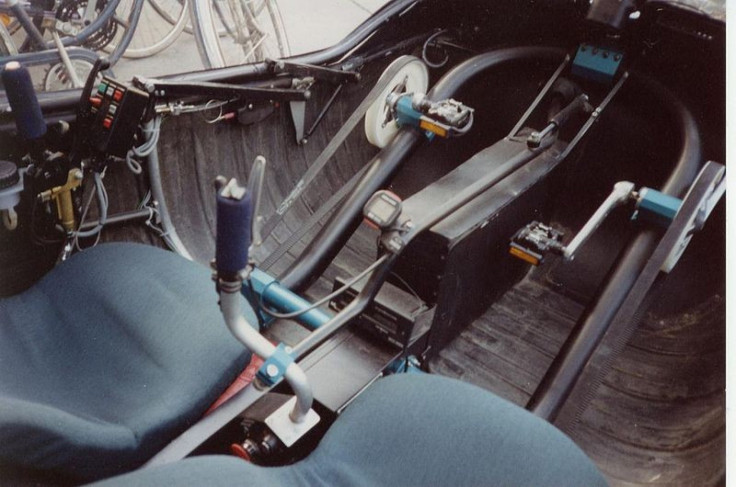Is The Twike HEV Hybrid The World's Best City 'Car'?

While Twike may sound like a 3-year-old child's mispronunciation of another word, it actually refers to what may be the world's best -- or worst -- city car, depending on your perspective: the Twike human-electric vehicle, or HEV.
The Twike is a three-wheeled, joystick-controlled, HEV hybrid developed in Switzerland. The first version, combining human peddle power and an electric drive, made its debut in 1991. The three-wheeled Twike, or twin-bike, takes its name from the two-passenger configuration. It features an electric motor and an occupant-powered peddle system.
Peddling the Twike increases its range, but not its top speed, which is an exceptionally modest 52.8 mph, according to Twike manufacturer FINE Mobile GmbH. The maximum range of the Twike is about 100 miles per charge.
The Twike, besides being very slow, is also not a vehicle most people would describe as being attractive: It looks like the nose of an airplane fell off and grew some wheels. The Twike also suffers from the unfortunate, but obvious, distinction of being a car that you have to peddle. Most Twikes have been sold in Switzerland and Germany. There are 20 to 25 in the United States -- cars that require exercise simply may not be very appealing to the average American.
Despite a face only a mother could love, weird joystick controls, and peddles, the Twike does shine in one regard: It is very cheap to operate. Back-of-the-envelope calculations at Wikipedia indicate the Twike can travel 300 miles for a thrifty $2.40, although the cost is variable depending on utility expenses. The cost per mile would be slightly under 1 cent.
Of course, a would-be Twike buyer would have to plan on driving the vehicle for some time before the cost-per-mile savings would really be worth it. A new Twike cost between $17,000 and $20,000 in 1998, according to EV World. Current cost information is available on request from FINE Mobile.
While the limited range and peddling would probably make the Twike relatively onerous to drive cross-country, the vehicle could be an excellent choice for a driver looking for a cheap-to-operate, small, city car. The Twike certainly is more unusual than a Smart car, although it is more expensive.
Would-be Twike purchasers should consider carefully whether the cost of the vehicle, its strange mode of operation, and unsightliness are worth their while. FINE Mobile, though, has described the weird HEV Twike as efficient, environmentally friendly, attractive, and sportive.
FINE Mobile has produced a somewhat melodramatic video of the Twike in action.
© Copyright IBTimes 2025. All rights reserved.





















